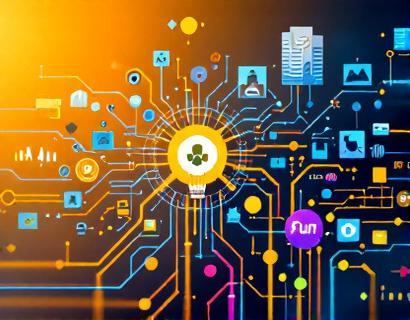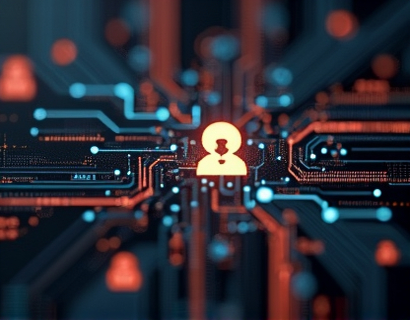Transforming Education with AI-Powered Chatbots: A Comprehensive Guide for Students, Families, and Educators
The integration of artificial intelligence in education has opened new avenues for enhancing the learning experience. Among the various tools emerging in this space, AI-powered educational chatbots stand out for their ability to provide specialized insights tailored to the needs of students, families, and educators. This article delves into the capabilities and benefits of these chatbots, focusing on how they deliver industry knowledge and services in a secure and engaging manner.
The Role of AI Chatbots in Education
AI chatbots are revolutionizing the way educational content is delivered and consumed. These intelligent virtual assistants use natural language processing and machine learning to understand and respond to user queries with precision and relevance. In the educational context, chatbots serve as a valuable resource, offering instant access to a wide range of information, from academic concepts to industry-specific knowledge.
Enhancing Learning for Students
For students, AI chatbots are more than just a source of information; they are interactive learning companions. These chatbots can explain complex subjects in simpler terms, provide step-by-step solutions to problems, and offer personalized learning paths based on the student's progress and understanding. This personalized approach ensures that each student receives the support they need to succeed, regardless of their learning pace or style.
Moreover, chatbots can simulate real-world scenarios, making learning more engaging and practical. For instance, a chatbot focused on science can guide students through virtual experiments, while one focused on history can create interactive timelines and quizzes. This interactive and immersive learning experience not only makes education more enjoyable but also enhances retention and comprehension.
Supporting Families in the Educational Journey
Parents and guardians play a crucial role in a child's education, and AI chatbots can be a valuable ally in this journey. These chatbots can provide parents with updates on their child's progress, offer tips for supporting learning at home, and answer common educational queries. By keeping parents informed and involved, chatbots help create a cohesive and supportive learning environment.
Additionally, chatbots can assist families in navigating the educational system, from understanding curriculum requirements to finding resources for additional support. This accessibility ensures that families, regardless of their background or knowledge level, can actively participate in their child's education.
Empowering Educators with Industry Insights
Educators are the backbone of the educational system, and AI chatbots can significantly enhance their effectiveness. By providing timely and accurate information, chatbots help teachers stay updated on the latest educational trends, teaching methodologies, and industry developments. This continuous learning ensures that educators can deliver the most relevant and effective instruction to their students.
Chatbots can also assist teachers in lesson planning and resource curation. By analyzing data and user preferences, these AI assistants can suggest tailored lesson plans, supplementary materials, and interactive activities that align with educational standards and student needs. This not only saves time but also enriches the teaching experience.
Ensuring Content Verification and Safety
One of the most significant advantages of using AI chatbots in education is the emphasis on content verification. Educational institutions and families seek reliable and accurate information, and chatbots are designed to meet this need. All content provided by these chatbots undergoes rigorous verification processes to ensure its accuracy and relevance. This commitment to accuracy builds trust and confidence in the information shared.
Moreover, safety is a paramount concern, especially when it comes to children. Chatbots designed for educational purposes are developed with robust safety features to ensure a secure and child-friendly environment. These features include strict content filters, privacy protections, and user authentication mechanisms. By adhering to strict safety standards, these chatbots provide a safe space for students to learn and explore.
Child-Friendly Versions for Young Learners
Recognizing the unique needs of younger learners, many AI chatbot platforms offer child-friendly versions. These versions are specifically designed to be engaging and age-appropriate, using simple language and interactive elements that resonate with children. The content is carefully curated to be both educational and entertaining, making learning a delightful experience for young minds.
For example, a child-friendly chatbot might present historical facts through storytelling or teach mathematical concepts through fun games. These interactive elements not only capture the attention of young learners but also reinforce their understanding and retention of the material.
Benefits for Educational Institutions
Educational institutions that integrate AI chatbots into their systems can reap numerous benefits. These chatbots serve as a 24/7 resource center, available to answer queries and provide support at any time. This constant availability ensures that students and educators can access information and assistance whenever needed, without the constraints of traditional office hours.
Furthermore, chatbots can help streamline administrative tasks, such as scheduling, enrollment, and communication. By automating these processes, institutions can reduce workload and focus more on core educational activities. This efficiency not only improves operational effectiveness but also enhances the overall educational experience.
Case Studies and Success Stories
Several educational institutions and organizations have successfully implemented AI chatbots, achieving notable improvements in student engagement and learning outcomes. For instance, a middle school in the United States integrated an AI chatbot to assist students with homework and provide additional practice exercises. The result was a significant increase in student participation and a marked improvement in test scores.
Another example is a university that used an AI chatbot to guide freshmen through the orientation process and answer common questions about campus resources. The chatbot not only reduced the workload of student advisors but also enhanced the onboarding experience for new students, leading to higher satisfaction rates.
Future Prospects and Innovations
The potential of AI chatbots in education is vast, and ongoing advancements promise even more innovative applications. One area of development is the integration of augmented reality (AR) and virtual reality (VR) with chatbots, creating immersive learning experiences that blend digital and physical environments. This combination can transform subjects like biology, where students can explore 3D models of cells, or history, where they can virtually visit historical sites.
Additionally, the use of natural language generation (NLG) is becoming more sophisticated, allowing chatbots to produce more natural and varied responses. This advancement will make interactions more human-like and engaging, further enhancing the learning experience.
Conclusion
AI-powered educational chatbots represent a significant leap forward in providing specialized insights and support to students, families, and educators. By delivering accurate, verified content in a safe and engaging manner, these chatbots enhance the learning experience and support the educational journey at all levels. As technology continues to evolve, the role of chatbots in education is likely to expand, offering even more innovative and effective solutions for the future of learning.











































